So, There Are Multiple Fictions In Which 'gargoyles' Come Alive. These Are Actually Grotesques, As They
So, there are multiple fictions in which 'gargoyles' come alive. These are actually grotesques, as they are not a part of the drainage system. If gargoyles were the ones that came alive, bearing in mind that their mouth is the exit hole generally, they would piss out of their mouths.
In one of those cases where the originator thought this through more than the imitators, Clark Ashton Smith’s 1932 short story “The Maker of Gargoyles” gets this right, highlighting the lasciviousness of the animated stonework and their satyr-like carver Reynard:“Then, when the full cathedral gutters poured above the streets, one might havd thought that the actual spittle of a foul malevolence, the very slaver of an impure lust, had somehow been mingled with the water that ran in rolls from the mouth of the gargloyles.”
No real elaboration on their stone cloacae, however
More Posts from Watchmewatchyouwatchme and Others

Promo 2015




Illustrated edition, pages 1-4!!
That pesky verbal component…
I’ve rarely played a game in which people actually roleplay the full casting of a spell. Typically, everyone will be cool with simply saying “I cast _____”, and it happens.
So I decided to ask my friends what they thought the verbal component of a spell would sound like. All of them unanimously agreed that the Handbook leaves it deliberately vague. While this leaves space for player creativity, they all said that they would perform the casting in character, except spells are most often cast in make-or-break situations and it’s difficult to come up with some fictional jargon on the fly.
Introducing “Say the Magic Words”: some suggestions of utterances to fill in your verbal spell components.
To reflect the idea that magic in D&D comes varied sources and has been discovered by peoples from all across the worlds and histories, I tried to incorporate little hints of different languages from around the real world. Came across some fantastic foreign vocab and I can’t help but love the sheer diversity and similarities in human languages - both written and spoken.
So let me get this straight. Tumblr introduced a safe mode that is active by default. I'm okay with that. But, now even if you turn safe mode off, you can't see nsfw content? So why not just remove the option to turn it off entirely?
Juniper

hmmm
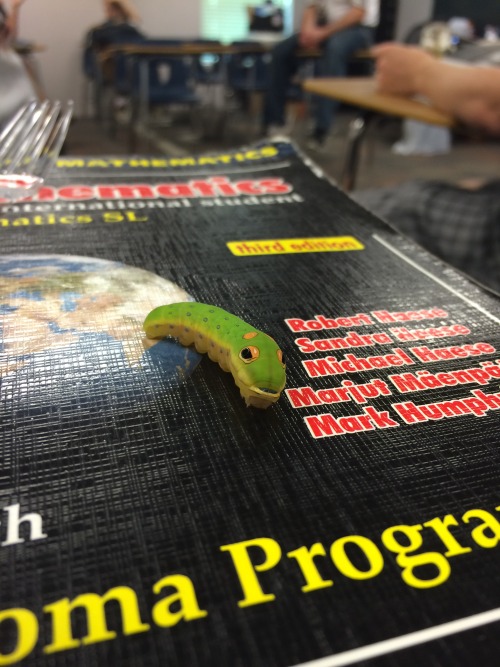

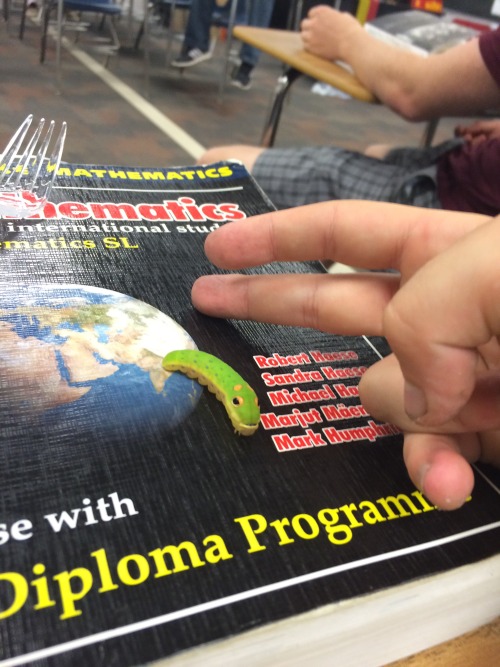
So I found this caterpillar on my way to class
We’re bros
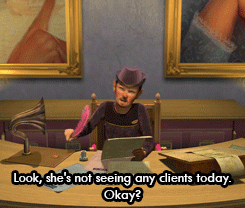

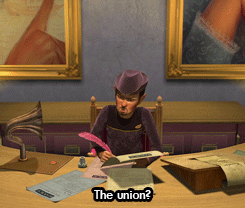
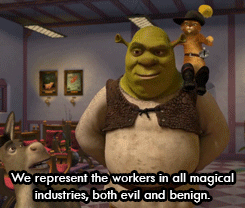
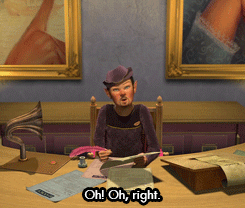
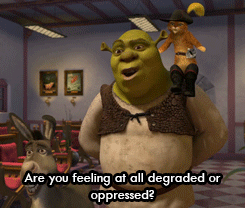
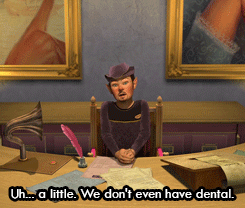
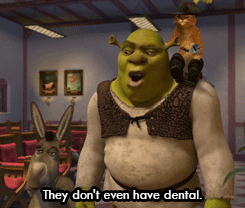
Writing: The Villain
In most stories, there is a tangible villain that works at every opportunity to stop your hero from reaching their goal. They are oftentimes the epitome of evil and hatred, depending on how extremely their villainy runs. In many ways, they are almost as important as the main character, so here are some tips on developing them well.
Villains should be handled with the same deep thought as heroes.
Just because they’re the villain doesn’t mean they aren’t a very major character, and complex characters are always more favorable than simple, boring characters. Develop their appearance and personality in detail. Formulate a backstory. Understand the motivations behind what they do, and let their actions reflect their internal desires.
Find ways to make your villain stand out from other villains.
Most villains are maniacal. They are almost all willing to do terrible things in order to get what they want. A lot of villains are related to their character in some way, and sometimes this relationship is revealed in a plot twist. These are all well and good, but trying to make these ideas seem fresh and interesting is difficult nowadays. Play with your ideas and tweak these tropes, or maybe even disregard them all together. Do what you can to make your villain not sound like another Voldemort or Darth Vader. (Reading your work and/or having others read your work is a good way to see if your villain (and other characters, too) are interesting and unique enough.)
Consider that your villain is (probably) still human.
Even if they aren’t human in the technical sense, they probably still have human emotions. Give your character depth by exploring their sense of morality and where they came from. Why do they think what they’re doing is acceptable. Do they think it’s acceptable? What happened that lead them up to this point of villainy?
Explore your villain’s relationship with the other characters.
Are they closely connected with your hero and the hero’s friends? Are they in no way related? What did the good characters do to get on the villain’s bad side? How deep does your villain’s anger or hatred for your hero run? Do they hate them at all, or are they doing what they’re doing for another reason? Are the things that your villain is doing a direct result of the hero’s actions, or was there another cause?
Decide what the end result of the villain’s actions will be.
You have one of two very basic routes this can take: your villain can either defeat or be defeated by the hero. The hero also has one of two routes (if they defeat the villain): they can defeat them by force and kill/imprison/etc. them, or they can “convert” them to the good side. How will this decision affect your villain? How will it affect the overall story? How will it affect the other characters? What will the long-term effects be?
Their motivations must be believable.
Too often the villain comes off as cheesy or unsatisfying because there doesn’t seem to be a good reason for them to be acting against the main character. Their actions and motivations should be just as definitive and interesting as any other character’s. Try to avoid falling into the trap of “sworn revenge” for no good reason–or, even worse, copping out by saying the villain is “just crazy”.
Narrating Combat in D&D
Combat descriptions are always difficult to come up with on the fly. Here is a guide with some tips and tricks to make your combat more interesting and dramatic!

image credit: Michael Komarck
Hit Points
When a creature or player gets hit by an attack, think about the situation surrounding the attack. Has the creature already taken damage? Figure out how much damage is being dealt before describing the attack. Is it a lot of damage or a little? How tough is the defender? is it merely a pinprick to them or a grievous wound? No matter how you slice it, hits always come back to one thing: Hit Points.
So something important that you should know about Hit Points: just because you subtracted “Hit Points” and they took “damage” doesn’t necessarily mean you actually drew blood. Most people always default to “you stab them in the face/chest/neck.” Well that’s a pretty gruesome and very lethal hit. Most creatures would probably just flat-out die from that. This isn’t a Tom & Jerry cartoon where creatures squash and stretch to absorb the damage.
To help ease into a creature’s eventual demise over a large span of Hit Points, try describing nonlethal ways that creatures and players “take damage.“ Have each attack wear down the creature. Only draw blood when a player lands multiple blows or rolled a high attack or damage roll (basically when the player feels good about their attack) or when they fall below half hit points. That’s why we use the term “bloodied,” after all! Here are some examples of some pre-bloodied attacks:
Your deft swordplay is wearing out the defender as they struggle to parry your strikes!
The creature is backed into a corner, its options for defenses running thin!
Their weapon is buffeted by your blows and knocked away. Now’s your chance!
The horseman is knocked from their mount, leaving them battered and bruised as they roll back to their feet!
Your ambush forces the orc to deflect your dagger with their bare hand to save itself. It yowls in pain!
Your mace clobbers the knight upside its head, dazing them as a metallic sound reverberates through their helmet! Backpedal in confusion.
The wizard wrinkles their brow as they deflect your attack with a hasty shield, this one weaker than the last. Their concentration seems to be failing!
Once a creature is bloodied, then you can start with the more lethal attacks. Save the head, neck, chest, and femoral artery hits for when the creature is about to die. But by all means, stab them in the kidneys, flay some muscle from their arm, chop off one of their antennae or extra limbs. Don’t be afraid to impart status debuffs for certain hits (even if the attack wasn’t necessarily a crit). For instance, if they take a leg wound they might have slightly reduced speed as they limp around the battlefield. Perhaps you cut off their hand or shot out an eye, rendering the part useless until they receive magical healing. Here are a list of almost-lethal places where I like to describe hits that works for most humanoids:
Hit Table (1d10):
1: Eyes: blind them for 1 round if just one eye, or permanently if both.
2: Ears: deafen them for 1 round if just one ear, or permanently if both.
3: Hand/Fingers: deny them the use of that hand. If they wield a two-handed weapon, they do so with disadvantage.
4: Arms: if just a wound, give them -1 to attacks with that arm. If the limb is chopped off, obviously they can’t use it.
5: Legs: half their speed. Reduce their speed to 5 ft. if the limb is chopped clean off.
6: Belly: reduce their speed by 5 ft. and give them the Poisoned condition.
7: Lower Back: no major negative impact, but they shouldn’t lift any heavy objects for 6-8 weeks.
8: Side Torso: no major negative impact, but they should definitely have that looked at for internal damage.
9: Shoulder: no major negative impact. Make sure they wear a sling so it heals properly.
0: Butt: hilarity ensues. They can’t sit down without immense pain.
Misses
Yes, it’s really fun to hit with an attack and roll high damage dice, but people oftentimes will remember a great missed attack just as fondly. In fact, a DM that doesn’t describe a miss could risk making that player feel left out or frustrated if they miss often. So make the misses memorable and dramatic.
Keep in mind what sort of weapon they were using when they missed, or what sort of things in the environment maybe got hit instead. Heck, maybe a miss might help their situation if they break something that puts them on the advantage! Maybe they hit a support beam instead of the gnoll. You have them roll for damage, and it’s a huge amount! The support beam snaps and rocks from the old mine start to cave in a 20 ft. radius! Have everyone roll DEX saves!
Something like that works especially well on a critical failure. Always describe a critical failure in a special way, maybe imposing a debuff on the person who missed or changing the situation somehow. A comical gaffe is always welcome here, as well.
Critical Miss Ideas:
Attacker strikes a nearby object instead
Attacker’s weapon becomes damaged or broken (unless it’s a magical item)
Attacker’s weapon becomes stuck or disabled for their next turn (maybe a sword stuck in a log or a jammed crossbow)
Defender knocks the weapons from the attacker’s grasp
Attacker accidentally strikes themselves for half the normal damage
Defender rolls out of the way, repositioning themselves behind the attacker.
Personality
Accentuate the creature’s personality by characterizing HOW they perform certain actions. A duelist might stab precisely for your thigh, but an ogre might swing a club clumsily. This can lead to comical gaffes, like the duelist yelling “ha-HA! …oh?” as their sword slips past you and they fall on their face, despite you just calling their strike precise. The ogre can easily miss their swing and because of the clumsiness you described causing them to follow through and spin around, getting dizzy and confused for a turn.
Consider how the creature is reacting to their current Hit Point status. Do they clutch at their wound? Do they punch their wound and roar at their attacker? Are they unphased by their wound like an undead? Are they on the ground writhing in pain?
Diving into the character of an enemy will help you guide both their combat decisions and how you narrate the action. Here are some common fighting personality tropes:
Cocky: A cocky creature is fearless, but to an extent where they may make mistakes. They will also likely taunt their enemies.
Clumsy: Big, dumb creatures or drunken brawlers will not pay any heed to their surroundings, maybe even be easier to fall prone or fall for combat tricks.
Stoic: A stoic creature is likely able to notice everything in combat as they approach the battle logically and without emotion. Think highly-trained warriors like knights or samurai.
Fearful: A fearful attacker is actively trying to get away from or avoid combat.
Fearless: A fearless creature is what you typically see of a heroic attacker.
Gleeful: A gleeful attacker delights in violence and will do whatever they can to cause pain.
Angry: An angry attacker will fight recklessly without regard to their surroundings.
Hungry: A hungry creature is looking for a meal. If they get seriously hurt, they will likely just leave to find easier prey.
Confused: A confused creature will be on the defensive. It wasn’t planning on fighting today.
Environment
Use the environment to guide combat. Even if your players aren’t clever enough to utilize the environment, that doesn’t exclude the enemies! And hey, if players witness what the enemies are doing, maybe they will learn to follow suit or just be inspired to fight more creatively. I actually had an NPC fighting alongside the players one time. They went into a cave with some bugbears around a smoldering campfire. He first kicked some of the embers up into one of the bugbears’ eyes, blinding them for a turn. Then he kicked a bugbear over a log and face-first into the fire. The other players were simply on autoattack mode, but were thankful for the debuffs provided by the creative use of environment.
I can’t really provide a complete list for this, as there are nigh-infinite combinations of generic objects that can be used to gain an upper-hand, but here is a link to one of my older posts about using environmental factors in combat!
For more content on narrating spellcasting in combat, check out this post!
-
 thegentlemanlywyvern liked this · 6 years ago
thegentlemanlywyvern liked this · 6 years ago -
 zombieofdrake liked this · 6 years ago
zombieofdrake liked this · 6 years ago -
 themanwiththesuitcaseofflies liked this · 6 years ago
themanwiththesuitcaseofflies liked this · 6 years ago -
 thisragingpeace reblogged this · 6 years ago
thisragingpeace reblogged this · 6 years ago -
 j-psilas liked this · 6 years ago
j-psilas liked this · 6 years ago -
 theunwrittenman liked this · 6 years ago
theunwrittenman liked this · 6 years ago -
 handageddon liked this · 6 years ago
handageddon liked this · 6 years ago -
 nocatnocradle reblogged this · 6 years ago
nocatnocradle reblogged this · 6 years ago -
 nocatnocradle liked this · 6 years ago
nocatnocradle liked this · 6 years ago -
 watchmewatchyouwatchme reblogged this · 6 years ago
watchmewatchyouwatchme reblogged this · 6 years ago -
 hassanofthefrostedmuffins liked this · 6 years ago
hassanofthefrostedmuffins liked this · 6 years ago -
 drethelin liked this · 6 years ago
drethelin liked this · 6 years ago -
 onion-souls reblogged this · 6 years ago
onion-souls reblogged this · 6 years ago
